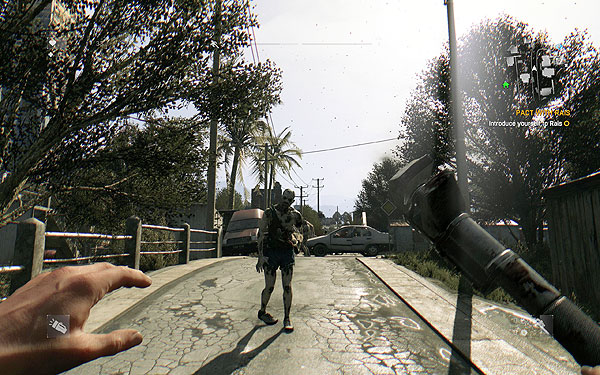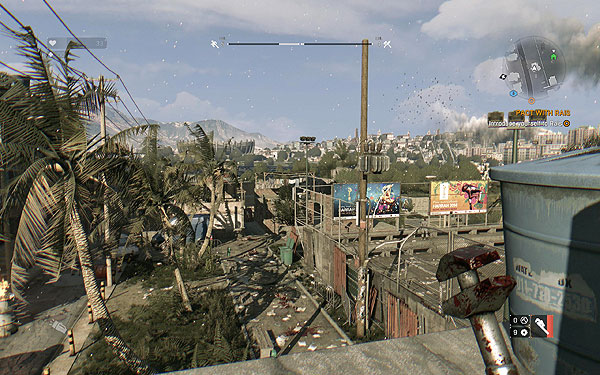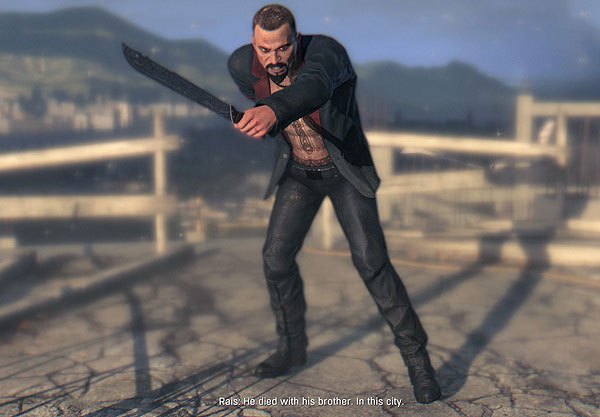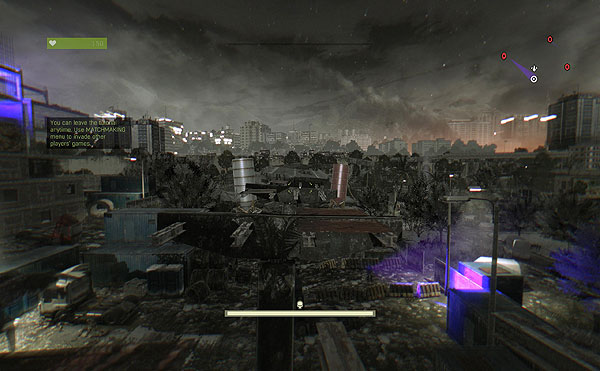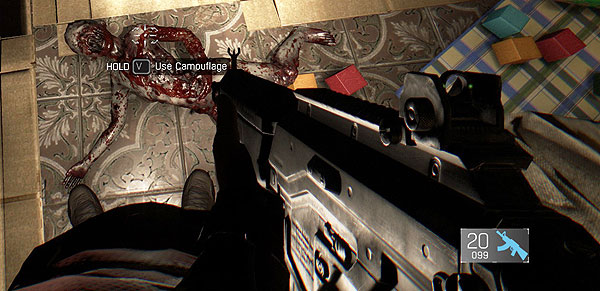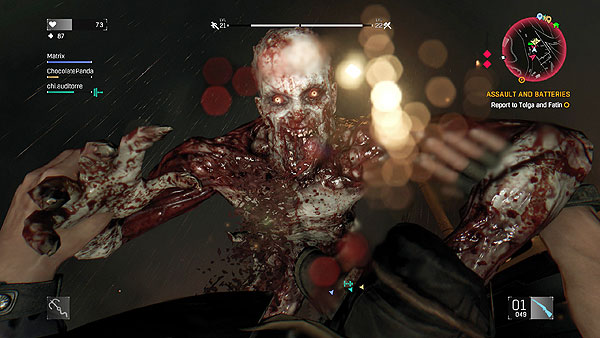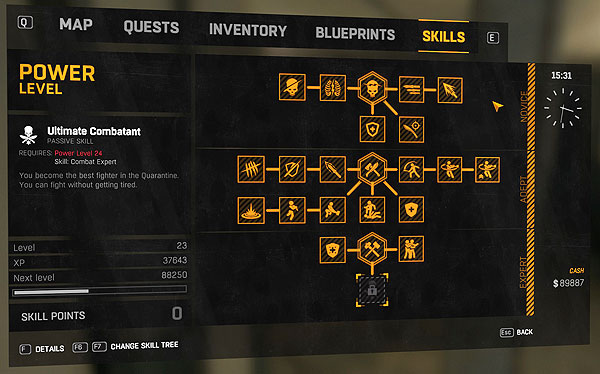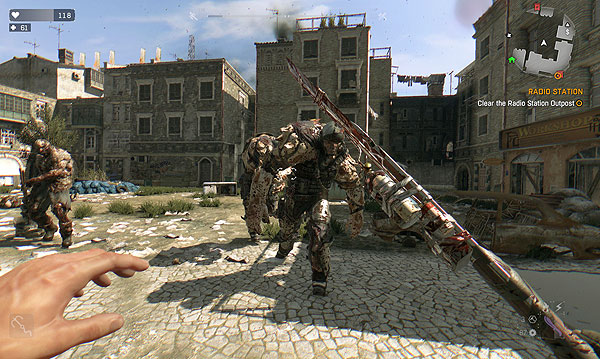Dying Light: Performance Analysis And Benchmarks
For Those Who Want More Horror In Their RPG
Developer Techland previously created Dead Island, a game that has some fairly obvious DNA links to the company's new release, Dying Light. Dead Island's publisher (Deep Silver) owns the rights to the Dead Island intellectual property, so Techland decided to start over with an all-new game universe. Both have a similar feel as zombie apocalypse-themed RPGs that bring to mind a combination of Bethesda's open-world role-playing games (Elder Scrolls, Fallout) and Valve's Left 4 Dead series.
Dying Light takes a much more serious tone than its spiritual predecessor with regards to graphics, atmosphere and story, though. This game also improves on combat compared to Techland's previous titles, where combat felt like a succession of one-on-one battles. Dying Light, on the other hand, places you in situations where you are forced to deal with many zombies at once. Crowds, hordes and armies of 'em.
In the campaign you play as Kyle Crane, a GRE operative sent to the city of Harran, the source of a viral outbreak that killed most of its inhabitants. Being specially trained, Kyle has a set of skills that puts him well above the average human's physical limitations. This comes in handy, since Kyle is pushed to the limit time and time again throughout the game.
Kyle is dropped into Harran in search of a stolen Global Relief Effort (GRE) file that contains some important information - information the organization does not want anyone else to acquire. As he descends upon the city, his parachute catches on a building. He gets hurt on the drop, is bitten by an infected zombie, and is subsequently saved by a woman named Jade (who also happens to be rather attractive). After a bit of running around, Kyle finds himself at a place called The Tower.
The Tower is the base of operations for a group organized by 'The Boss'. He has what are called 'runners' who hunt for supplies and air drops in hopes that the rival organization hasn't reached them first. This rival organization is run by the tyrant Rais, whose goons are nothing but trouble, wreaking havoc on the city and demanding payments for supposed protection from the infected.
I found the story ripe with modern themes: corrupt organizations and governments, a ruthless leader of what can be described as a terrorist group and a shared enemy between both sides. It has its sad moments (surprise, there's not much to be happy about in a zombie-overrun city), but is also enjoyable. The story can be played through in single-player or with up to three others online.
While fun and atmospheric in single-player, the game hits a whole new level when you experience it in co-op mode. I found myself enthralled for hours on end enjoying the company of friendly players, hunting at night for Bolter glands and grinding for experience. The game is definitely easier when you team up with human-controlled players since you can be revived by them, and you feel empowered to tackle those dangerous quarantine zones with no problem.
Get Tom's Hardware's best news and in-depth reviews, straight to your inbox.
At night, you can also opt to allow zombie invasions, where an online human player will assume the role of a night hunter zombie, and take on the team. The humans are in a race to destroy volatile nests, while the hunter is trying to eliminate the non-infected players. There are five sets of nests to destroy, with humans allowed a limited number of spawns until defeat. These matches are a great value add to extend the game's playability. It's already stuffed with quests, side-quests and exploration.
When the sun goes down, Dying Light becomes absolutely terrifying. Techland really nailed the horror aspect right down to the ambiance, background growling, screaming and sense of fear and urgency. The most powerful, unique zombies seem to sleep during the day and roam in the evening, when your situational awareness is severely hampered by limited vision. Playing at night provides an XP boost, but for the most part it's not worthwhile unless you're a horror junkie.
The most terrifying sight I've seen are the infected children. Not only are these bloody, deformed skeletons of infants, but their scream is bone-chilling. Never before have I stopped playing a game to question my morals and what I felt right about doing. Thankfully the infected children do not attack you. You can walk up to them and hold the interact button and calm them down. Creepy.
Getting attacked is definitely something you want to avoid, since that means losing health, a resource that only regenerates a small amount. Medkits are essential to your survival. Unlike in Far Cry 4, these items are relatively easy to craft. All you need is alcohol and gauze, practically what we use to treat a painful wound today.
Medkits can only do so much when you're being chased down by a good-sized group of Volatiles (your main worry at night). Their range of sight is shown on your mini-map so that you can attempt to avoid them. I say attempt since any bit of noise attracts these agile killers, and the sound of your fight with one will attract more until you've either died or escaped (which is near impossible unless you have the grappling hook).
The level system in Dying Light is presented in rather common RPG form. There are three skill trees and you can choose to focus on one specifically. But if you play the game without grinding, all three skill trees will level up at the same rate. The skill trees are called 'Survivor', 'Agility' and 'Power'. Survivor is leveled up by completing missions, side quests and aiding the less fortunate. Agility is leveled up by making your way to and from objectives. Every step you take gains experience, and it's rather easy to grind your way through agility levels later in the game. Power is leveled up via melee combat. Cutting, slashing, hammering and beating your way through whatever stands in your way increases your power.
Each of the skill trees, as with any RPG, has unique abilities that you can unlock. This includes the aforementioned grappling hook, the ability to jump from far greater heights without injury, throwing deadly tantrums with two-handed weapons and so on.
There are a lot of weapons in this game, and each one can be customized to your liking. The rarer the weapon, the more slots for mods and upgrades it has, further increasing its deadliness. There are blueprints found all over Harran that can alter how a weapon behaves. Some add electricity to your slashes, and others add fire and bleeding damage. The list goes on. Mods and blueprints are essential to your success; they make a big difference in battle. It's really important to explore and collect as much as possible in the city's ruins.
Near the end of the game it's easy to pick up some powerful swords. With mods, these can inflict ridiculous damage. Personally, I find them to be overpowered when you face the larger armored zombies. One slash from a sword doesn't seem like it should kill those beasts. But hey, it is an RPG, and things start getting out of hand when you reach end-game content.
Really though, Techland nails this one. If you're looking for a good game to play with friends over a weekend, Dying Light has my recommendation.
With that covered, let's see if what kind of PC hardware you need to run this title smoothly. Spoiler: I hope you have a graphics card with more than 1GB of memory at its disposal.
Current page: For Those Who Want More Horror In Their RPG
Next Page Image Quality, Settings And Test Setup-
chimera201 i5 in FPS chart, i7 in FPS over time chart. Which one is it?Reply
Edit: Gotta say that FX 9590 looks like a joke -
alidan there is one setting in the game, i believe its draw distance, that is able to halve if not drop the games fps to 1/3rd what you would get if you set it to minimum, and from what people have tested, it impacts gameplay in almost no meaningful way.Reply
what was that set to?
did you change it per benchmark?
is it before or after they patched it so even on max draw distance they lowered how far the game was drawing?
i know on my brothers 290X, i dont know if he was doing 1920x1200 or 2560x1600 was benching SIGNIFICANTLY higher than is shown here.
when you do benchmarks like this in the future, do you mind going through 3 or 4 setups and trying to get them to play at 60fps and list what options you have to tick to get that? it would be SO nice having an in depth analysis for games like this, or dragon age which i had to restart maybe 40 god damn times to see if i dialed in so i have the best mix between visuals and fps... -
rush21hit Q6600 default clockReply
2x2GB DDR2 800mhz
Gigabyte g31m-es2L
GTX 750Ti 2GB DDR5
Res: 1366x768
Just a piece of advice to anyone on about the same boat as mine(old PC+new GPU and want to play this), just disable that Depth of Field and/or Ambient Occlusion effect(also applies on any latest game titles). And you're fine with your new GPU + its latest driver. Mine stays within 40-60FPS range without any lag on input. While running it on Very High Preset on other things...just without those effects.
Those effects are the culprits for performance drops, most of the time. -
Cryio Was Core Parking taken into account when benchmarking on AMD hardware ? It makes no sense that the FX 4170 is faster than the 9590.Reply
The game works rather meh on my 560 Ti and Fx 6300 @4.5 GHz. But once I mess with the core affinity in task manager my GPU is getting 99% usage and all is for with the world. -
ohim Just shows how badly they optimize for AMD hardware ...no wonder everything works faster on Intel. This comes from an Intel CPU user BTW.Reply -
xpeh Typical Nvidia Gameworks title. Anyone remember Metro: Last Light? Unplayable on AMD cards until 4A issued a game update a few months later. Can't make a card that competes? Pay off the game developers.Reply -
Grognak @ xpeh - Couldn't agree more. A 750 Ti beating a 270X? 980 better than 295X2? I'm gonna stay polite but this is beyond ridiculous. This is pure, unabashed, sponsored favoritism.Reply
Edit: after checking some other sites it seems the results are all over the place. Some are similar to Tom's while others appear to be relatively neutral regarding both GPU and CPU performance (though the FXs still struggle against a modern i3) -
Empyah Sorry guys but you messed something up in these tests - cause my 290X is getting higher averages than your 980(i got an 4930k and view distance at at 50%), everybody knows know that you are heavily biased towards Nvidia and Intel, to the point it stops being sad and starts being funny how obvious it is - but if this test is on purpose we have ourselves found a new low today - cmon guys were in the same boat here - we love hardware and want competition.Reply -
silverblue Looks like very high CPU overhead with the AMD drivers, and really poor use of multiple cores with the CPU test. The former can be solved easier, the latter sounds like the developers haven't yet grasped the idea of more than two CPU cores working on a problem. Is this game really heavy on the L3 cache? It could explain major issues for the 9590 in trying to use it effectively with more cores and its higher clock speeds counting for naught (and/or the CPU is being throttled), but as the L3 cache is screwed on FX CPUs, that would also have a detrimental effect on things - it'd be worth testing a 7850 alongside a Phenom II X4/X6 to see if the removal of L3 or falling back to a CPU family with good L3 would make any sort of difference to performance.Reply

